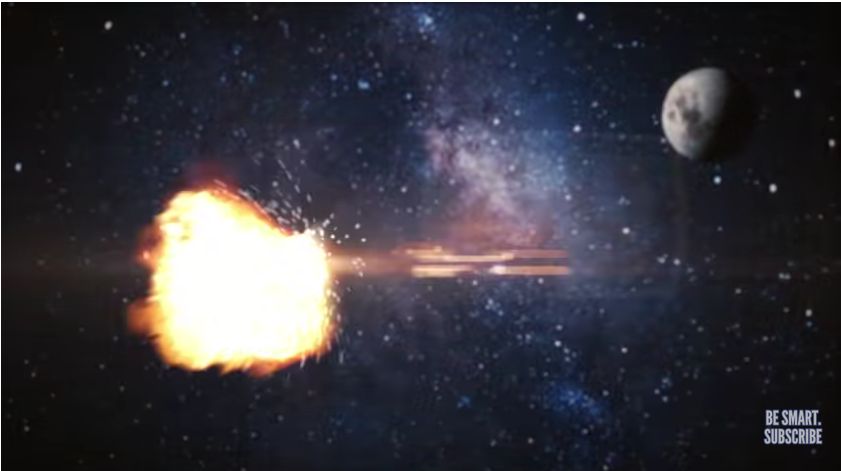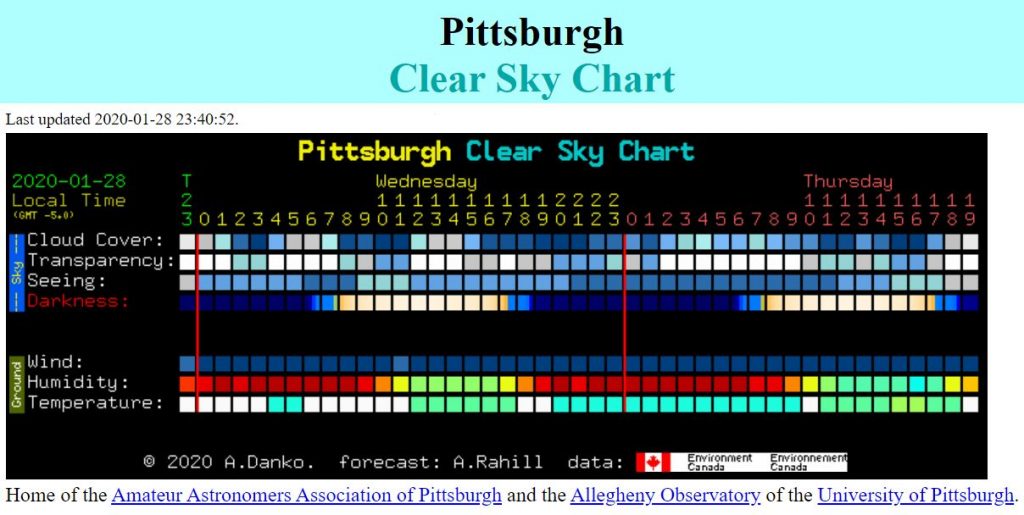
Wednesday, 29 January 2020:
Chances are it won’t happen but …
Tonight at around 6:39pm two defunct satellites that are still in orbit have a 1% (or less) chance of colliding 900km (560 miles) above Pittsburgh. They’ll be traveling toward each other at 32,880 mph!
If they don’t collide, everyone who has anything to do with satellites will breathe a sigh of relief because there will be that much less out-of-control space junk for their own satellites to hit.
If they do collide they won’t hurt us. At best we’ll see a few shooting stars as the bits burn up in Earth’s atmosphere. But we probably won’t see anything because Pittsburgh’s cloud cover will be 40% at that point. Check out the Clear Dark Sky chart for the forecast (screenshot below).
Here’s the original collision prediction from LeoLabs, an outfit in California that tracks space junk and potential collisions.
2/ On Jan 29 at 23:39:35 UTC, these two objects will pass close by one another at a relative velocity of 14.7 km/s (900km directly above Pittsburgh, PA). Our latest metrics on the event show a predicted miss distance of between 15-30 meters. pic.twitter.com/Hlb1KeQ50U
— LeoLabs, Inc. (@LeoLabs_Space) January 27, 2020
4/ Events like this highlight the need for responsible, timely deorbiting of satellites for space sustainability moving forward. We will continue to monitor this event through the coming days and provide updates as available.
— LeoLabs, Inc. (@LeoLabs_Space) January 27, 2020
See KDKA’s announcement with video.
And here’s a more in depth article from Forbes Magazine.
In the meantime, LeoLabs revised their estimate to a pass distance of 13-87 meters and a 1 in 1000 chance of collision.
I’ll bet we won’t see any stars tonight.
(screenshot of space junk collision from PBS Be Smart video; click on the caption to see the original video)
UPDATE on 31 January 2020: No, they didn’t hit but they came mighty close. Analysis by LeoLabs at The IRAS / GGSE 4 Close Approach.
